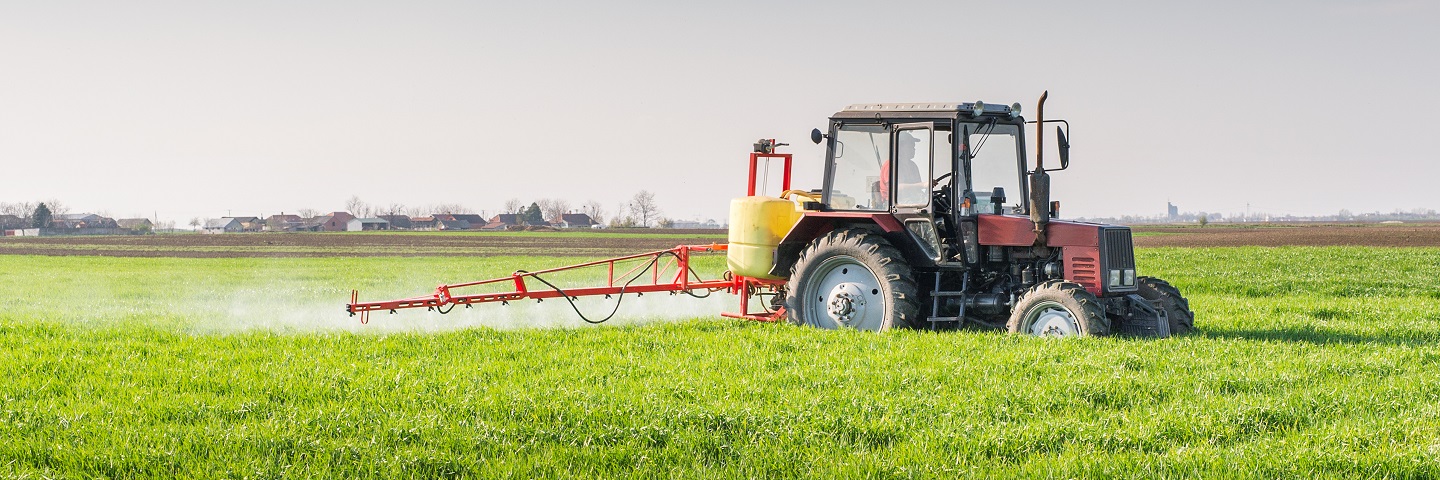
Visit our other sites
-
Fapas - Proficiency Testing
Globally recognised provider of proficiency tests, running over 400 tests annually across an extensive range of matrices and analytes
-
Great Crested Newts Testing
A single sample taken by an ecologist at any time during the newt breeding season can determine their presence or absence, saving you time and money
Ainsley is the science lead for chemical safety at Fera with over 30 years experience in the area.


-
Area of expertise
Analytical Chemistry
-
Years of experience
30+
-
Highest qualification
MSc
With a background in chemistry, Ainsley leads multidisciplinary projects (including GLP –compliant studies) and monitoring programmes to study exposure to chemicals and effects of chemicals on the environment and humans.
Ainsley’s personal expertise in the use of advanced analytical chemistry techniques to study exposure to chemicals. He has extensive expertise in developing and applying procedures to determine plant protection chemicals, pharmaceuticals and other organic chemicals in wide range of materials including animal tissues, crops, pollen, nectar, water, soil, sediment and air. He is a very experienced study director and has directed hundreds of GLP-compliant studies in areas as diverse as wildlife monitoring, crop residues, metabolism and operator exposure. Ainsley is a Member of the Royal Society of Chemistry (MRSC) and has provided evidence as an expert witness in a number of criminal cases involving poisoning with pesticides. Ainsley has also been part of the team that determined the role of the pharmaceutical diclofenac in the decline of the vulture population in the Indian sub-continent.
More about chemical regulation
Regulations and restrictions on the use of chemicals to tackle plant and animal pests and diseases are becoming increasingly stringent, which means the range of chemical options available for tackling these threats is constantly being eroded. It’s essential to ensure that any chemicals used in the environment do not pose a threat to plants, wildlife and ecosystems, while ensuring they are effective against target pests and diseases.
Latest Papers and Articles
Jones A, Turnbull G (2016) Neonicotinoid Concentrations in UK Honey, Pest Management Science, 72, 1897-1900 https://doi.org/10.1002/ps.4227
Jones A, Harrington P, Turnbull G (2014) Neonicotinoid Concentrations in Arable Soils After Seed Treatment Applications in Preceding Years, Pest Management Science, 70, 1780-1784 https://doi.org/10.1002/ps.3836
Charlton A, Jones A (2007) Determination of imidazole and triazole fungicide residues in honeybees using gas chromatography-mass spectrometry. Journal of Chromatography A, 1141, 117-122
Sharpe R, Davies I, Jones J, Livesey C, Jones A (2006) Diazinon Toxicity in sheep and cattle from Misuse of Unlicensed and Out-of Date Products. Veterinary Record, 159, p 16-19
Lawley W, Charlton A, Hughson E, Grundy H, Brown P, Jones A (2006) The development of a cell culture/ELISA assay to detect anticoagulant rodenticides and its application to analysis of grain bait. J. Agric. Food Chem, 54, pp 1588-1593

Events past and future
2016: Crops and Chemicals Europe 2016: Presented ‘Monitoring for effects of agrochemicals on wildlife’
2016: Chemical Industry Regulation 2016: Presented ‘Poisoning of bees by agrochemicals: evidence from monitoring in England and Wales’

Ainsley and their team work with customers to deliver the following services within Fera...
Chemicals and effects of chemicals on the environment and humans

Ecotoxicology
Helping commercial companies to accurately assess the toxic impacts of plant-protection products and veterinary medicines on a range of ecosystems and species.

Analytical Chemistry
Fera offers a wide range of analytical services using sophisticated analytical instrumentation and can provide assistance in analytical method development in support of environmental toxicology studies, biotechnology, formulated product analysis, analytical method validation to GLP requirements and much more.
Latest Papers and Articles
Jones A, Turnbull G (2016) Neonicotinoid Concentrations in UK Honey, Pest Management Science, 72, 1897-1900 https://doi.org/10.1002/ps.4227
Jones A, Harrington P, Turnbull G (2014) Neonicotinoid Concentrations in Arable Soils After Seed Treatment Applications in Preceding Years, Pest Management Science, 70, 1780-1784 https://doi.org/10.1002/ps.3836
Charlton A, Jones A (2007) Determination of imidazole and triazole fungicide residues in honeybees using gas chromatography-mass spectrometry. Journal of Chromatography A, 1141, 117-122
Sharpe R, Davies I, Jones J, Livesey C, Jones A (2006) Diazinon Toxicity in sheep and cattle from Misuse of Unlicensed and Out-of Date Products. Veterinary Record, 159, p 16-19
Lawley W, Charlton A, Hughson E, Grundy H, Brown P, Jones A (2006) The development of a cell culture/ELISA assay to detect anticoagulant rodenticides and its application to analysis of grain bait. J. Agric. Food Chem, 54, pp 1588-1593

Events past and future
2016: Crops and Chemicals Europe 2016: Presented ‘Monitoring for effects of agrochemicals on wildlife’
2016: Chemical Industry Regulation 2016: Presented ‘Poisoning of bees by agrochemicals: evidence from monitoring in England and Wales’

Ainsley and their team work with customers to deliver the following services within Fera...
Chemicals and effects of chemicals on the environment and humans

Ecotoxicology
Helping commercial companies to accurately assess the toxic impacts of plant-protection products and veterinary medicines on a range of ecosystems and species.

Analytical Chemistry
Fera offers a wide range of analytical services using sophisticated analytical instrumentation and can provide assistance in analytical method development in support of environmental toxicology studies, biotechnology, formulated product analysis, analytical method validation to GLP requirements and much more.

Copyright © 2025 Fera Science Limited (“Fera”). All rights reserved.
For further information about how Fera uses any personal data collected from you, please see our Privacy Notice at www.fera.co.uk/privacy-policy.




